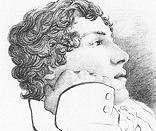"Ode to Autumn" was the last poem John Keats wrote before his death and is widely considered amongst the most famous poems. Popular with critics as well as poetry pleasure readers it has received a wide berth of praise; Harold Bloom claims it to be "one of the subtlest and most beautiful of all Keats's odes, and as close to perfect as any shorter poem in the English Language". However this ode has some marked differences from Keats' other works; for instance the lack of visionary dreamer, delve into the imagination or any kind of narrative voice or persona. Very much grounded in reality of the real world the rich language paired with strong imagery submerges the reader in sights, sounds and the feel of autumn. Much more than just a vivid description of a beautiful autumn day, Keats employs a range of poetic techniques that only serve his commemoration the progression of change.
Everything about this poem has been carefully thought out, even its form. Much like ""Ode on Melancholy," "Ode to Autumn" is written in a three-stanza structure with a variable rhyme scheme. Keats uses the format to create a sense of time's progression through the stanza's varies time settings: the opening stanza starts off in the morning with the "mists" in early autumn when the "summer has o'er brimmed"; while the second is mid afternoon during the harvest time when the heat makes everyone drowsy. The final stanza is late autumn when the birds are heading south and the sun is setting creating the "rosy hue." Each stanza is eleven lines long (as opposed to ten in "Melancholy") and each is metered in a relatively precise iambic pentameter that is percussive and attractive to the ear. This structure generates the feeling of steady...


